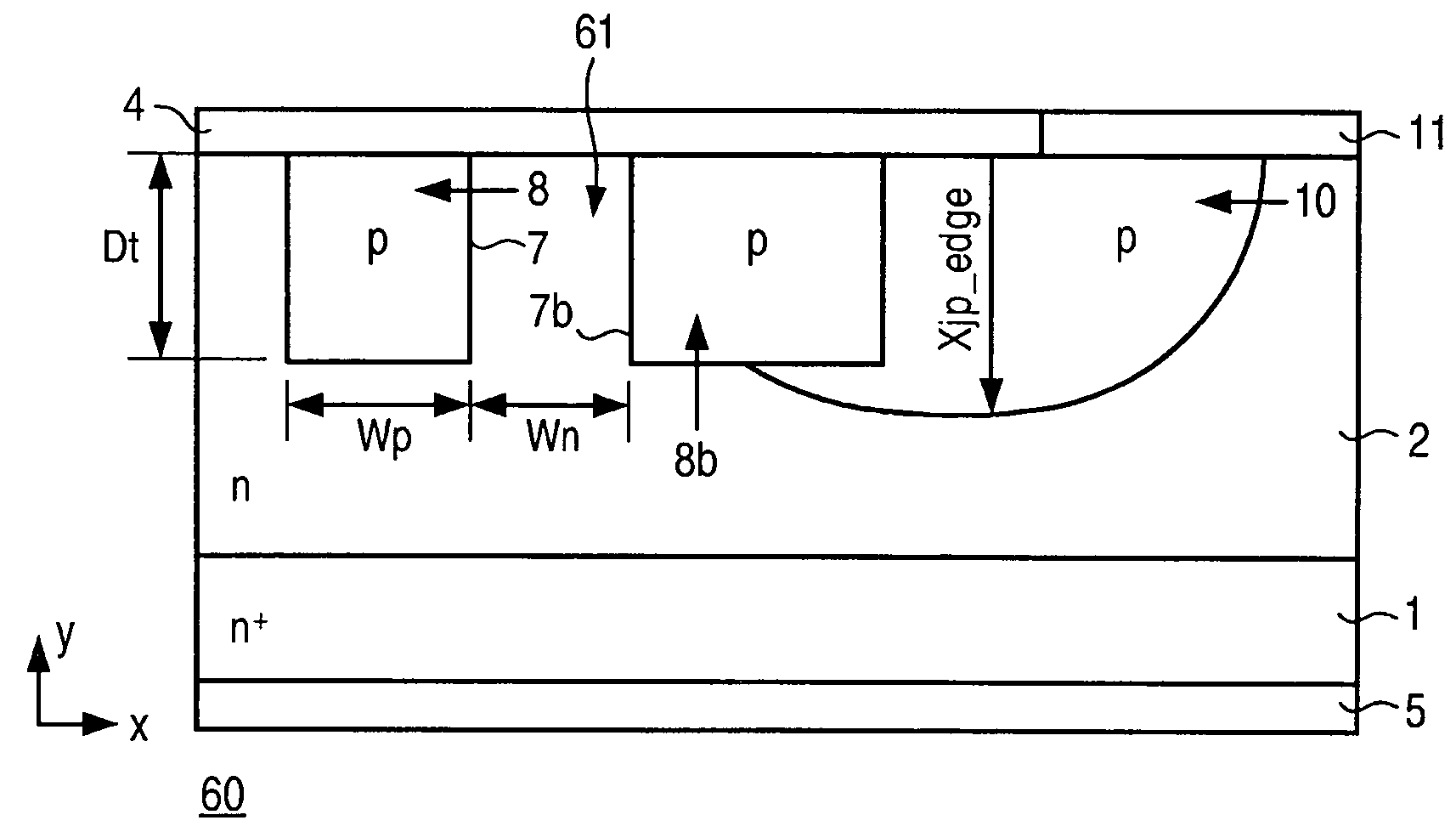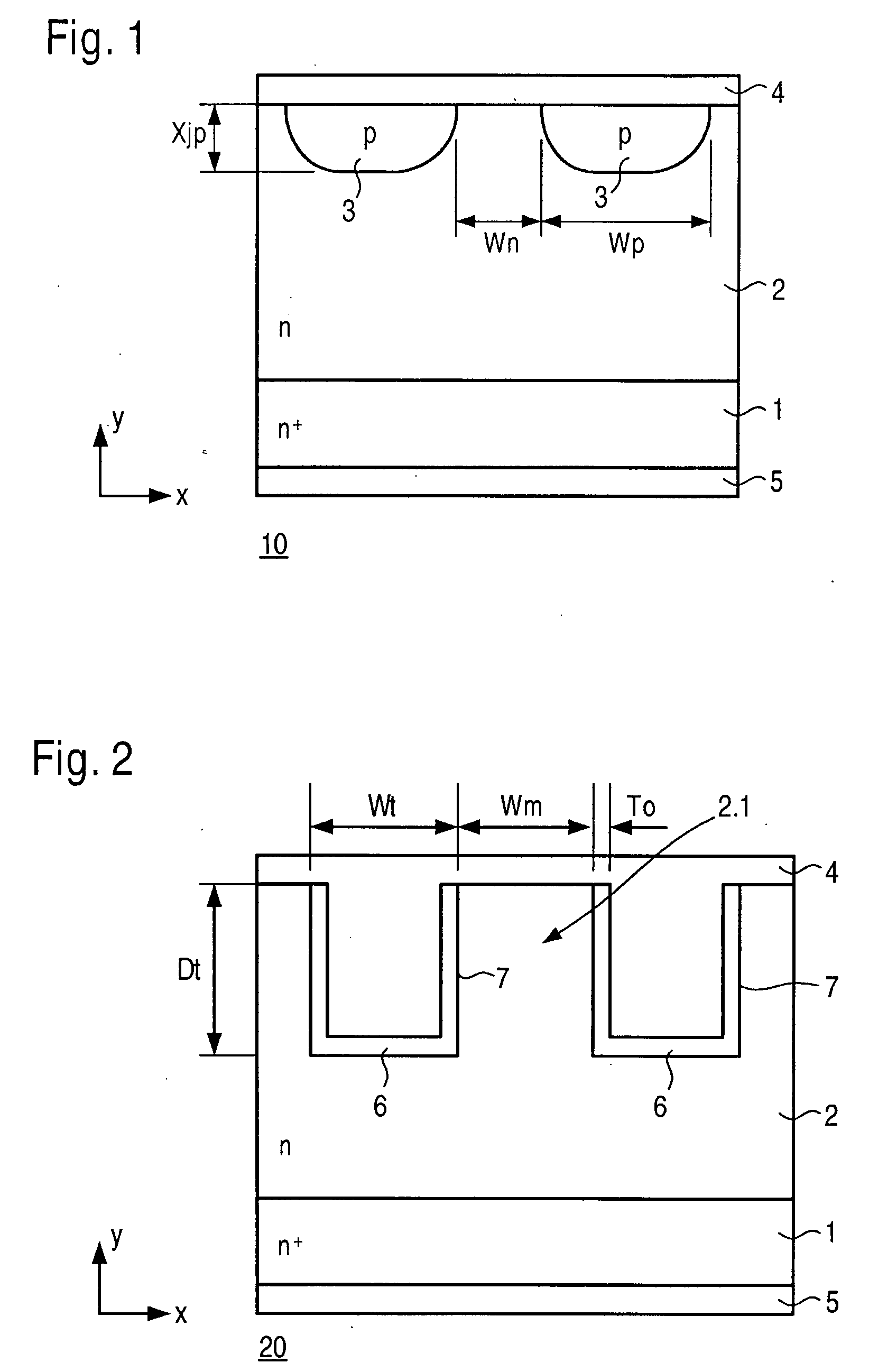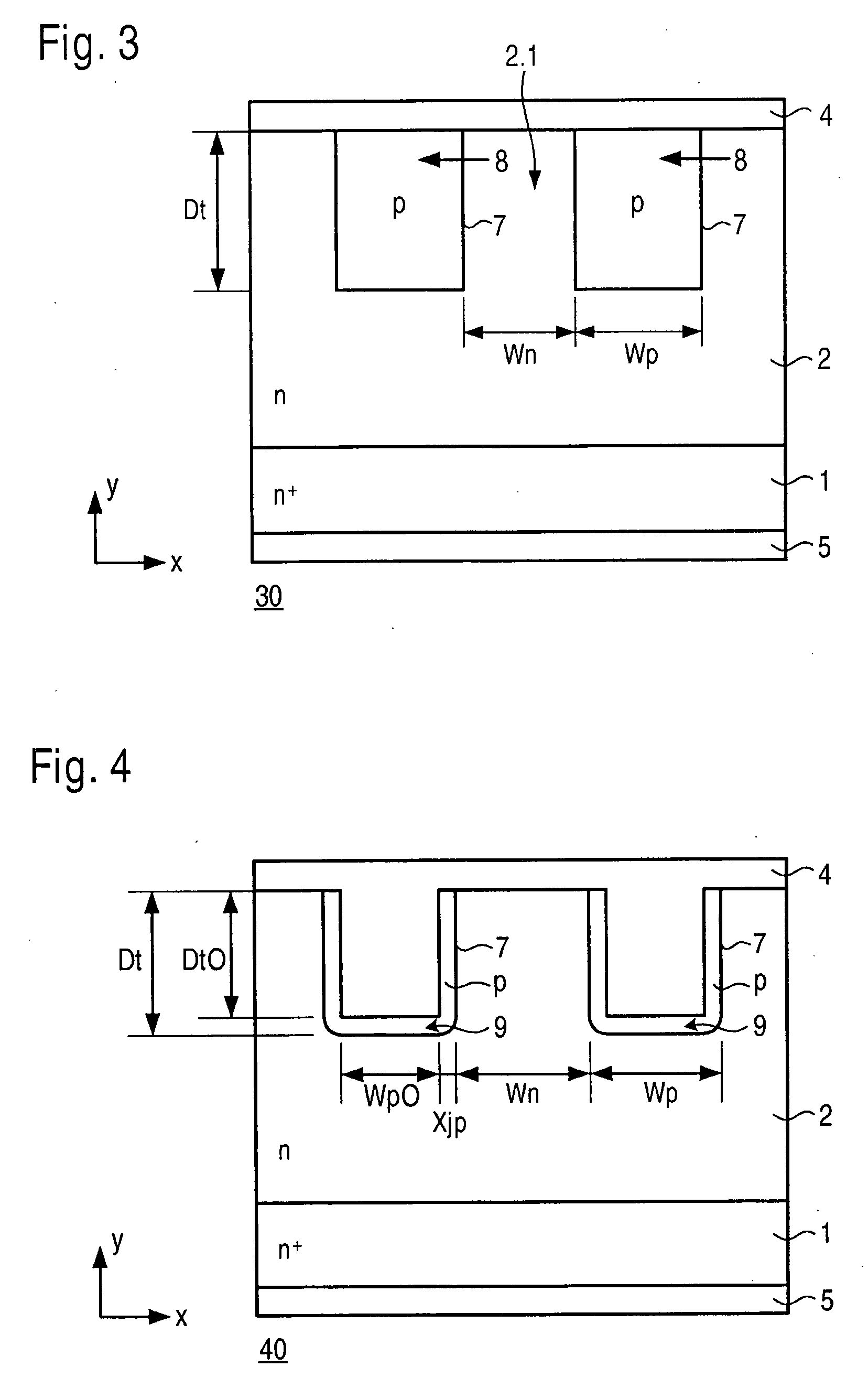Semiconductor Device And Method For Manufacturing Same
a technology of semiconductors and semiconductors, applied in the direction of semiconductor devices, basic electric elements, electrical appliances, etc., can solve the problems of comparatively high forward voltage uf, large sturdiness, and reverse current, and achieve the effects of low forward voltage, low reverse current, and great sturdiness
- Summary
- Abstract
- Description
- Claims
- Application Information
AI Technical Summary
Benefits of technology
Problems solved by technology
Method used
Image
Examples
Embodiment Construction
[0021]Known semiconductor devices are described briefly below to better present the advantages achievable with the present invention. FIG. 1 shows a semiconductor device 10 in the form of a traditional JBS (junction-barrier Schottky diode), which includes an n+ substrate 1, an n-layer 2, at least two p troughs 3 that have diffused into n-layer 2 and contact layers 4 and 5 on the front and back sides of the chip. Electrically, a JBS is a combination of a PN diode (PN junction between p troughs 3 as the anode and n-layer 2 as the cathode) and a Schottky diode (Schottky barrier between contact layer 4 as the anode and n-layer 2 as the cathode). Contact layer 5 on the back side of the chip functions as the cathode, while contact layer 4 on the front side of the chip functions as the anode with ohmic contact to p troughs 3 and at the same time functions as a Schottky contact to n-layer 2. Because of the low forward voltage of the Schottky diode in comparison with the PN diode, a current ...
PUM
 Login to View More
Login to View More Abstract
Description
Claims
Application Information
 Login to View More
Login to View More - R&D
- Intellectual Property
- Life Sciences
- Materials
- Tech Scout
- Unparalleled Data Quality
- Higher Quality Content
- 60% Fewer Hallucinations
Browse by: Latest US Patents, China's latest patents, Technical Efficacy Thesaurus, Application Domain, Technology Topic, Popular Technical Reports.
© 2025 PatSnap. All rights reserved.Legal|Privacy policy|Modern Slavery Act Transparency Statement|Sitemap|About US| Contact US: help@patsnap.com



